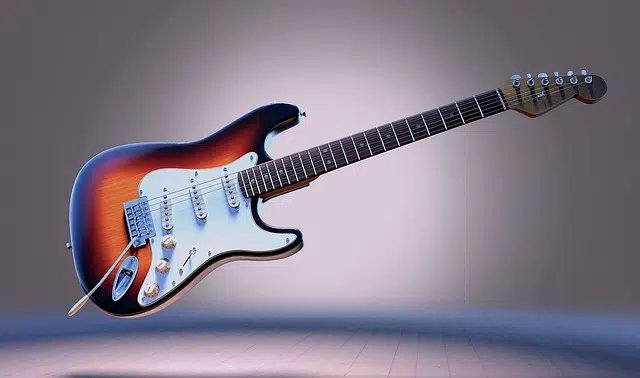
The electric guitar is connected to electronic equipment that amplifies the vibration of the strings.
Guitar is a term that derives from an Arabic word but whose most remote antecedent is found in the Greek language. It is a stringed instrument that has a sound box, a fretted neck and six strings that sound when plucked with a plectrum or fingers.
It is possible to distinguish between the classical guitar (also known as the Spanish guitar ) and the electric guitar (in this case, the vibration of the strings is amplified through electronic equipment). Both musical instruments emit different types of sounds , so their choice usually depends on the style of music they intend to perform.
Characteristics of a guitar
The shape, size and number of strings of the guitar have varied throughout history until adopting the shape of today. Today most guitars are made of spruce, rosewood, pine, cedar, ebony or cypress wood. The guitar has a soundboard , a neck, a bridge, a fingerboard, frets, six strings and a headstock.
The strings are named starting from the bottom one and are known according to the ordinal numbers: first string , second string , third string , fourth string , fifth string and sixth string . The first string is the highest, while the sixth string is the lowest.
To play the guitar, it is usual to rest the soundboard on your lap, orienting the neck towards the left. The left hand presses the strings against the fretboard, while the right hand is responsible for strumming or plucking.

Many musicians have contributed to the popularity of the Spanish guitar around the world.
Paco de Lucia
Throughout history there have been many guitarists who have become famous and have conquered the world with their music. One of them is Paco de Lucía , undoubtedly one of the greatest Spanish guitarists; who has known how to bring the music of his land to other regions.
He was born in Algeciras on December 21, 1947 in a humble family passionate about flamenco. There he began to follow his steps as a guitarist, until he became one of the undisputed masters of this instrument , receiving numerous awards including the National Guitar Prize for Flamenco Art and the Gold Medal for Merit in Fine Arts; He has also been an Honorary Doctor from the University of Cádiz since 2010.
Not only has he fantastically performed works of Andalusian folklore , but he has also composed pieces with a clear hint of the music of his land but in which he has also known how to fuse other styles, such as classical music, jazz and candombe.
Popularity of the Spanish guitar
Paco de Lucía began playing when he was just a few years old. His father forced him to practice many hours a day and when he was about 11 years old he had already made his first tour. It is worth mentioning that he is the brother of the well-known flamenco artists Pepe de Lucía and Ramón de Algeciras ; with whom he worked for many years.
But surely one of the most distinguished couples that Lucía has been able to form was the one she put together with the singer Camarón de la Isla . Together they have been able to guide the steps of Andalusian music to what it is today. They began by interpreting the music of their land in a pure and orthodox way to later mix it with other styles, giving it an absolutely renewed and authentic characteristic.
One of Lucía's greatest contributions to the music of her land was to internationalize it , managing to take it to every corner of the planet; through a virtuoso touch and a unique personality and style . Furthermore, he was responsible for introducing the Peruvian cajon into flamenco , making this magnificent instrument known and giving Andalusian music an impressive complexity and rhythm. Among his most recognized works are " Entre dos aguas ", " La Barrosa ", " Barrio la Viña " and " Guajiras de Lucía ".
